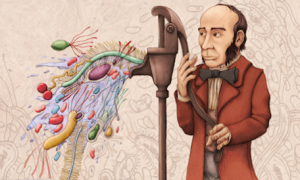Are crowdsourced maps the future of navigation? by Kevin Fitchard.
From the post:
Given the craziness of the first two weeks in September in the tech world an interesting hire that should have gotten more attention slipped largely through the cracks. Steve Coast, founder of the OpenStreetMap project, has joined Telenav, signaling a big move by the navigation outfit toward crowdsourced mapping.
OpenStreetMap is the Wikipedia of mapping. OSM’s dedicated community of 1.3 million editors have gathered GPS data while driving, biking and walking the streets of the world to build a map from the ground up. They’ve even gone so far as to mark objects that exist on few other digital maps, from trees to park benches. That map was then offered up free to all comers.
Great story about mapping, crowd sourcing, etc., but it also has this gem:
For all of its strengths, OSM primarily has been a display map filled with an enormous amount of detail — Coast said editors will spend hours placing individual trees on boulevards. Many editors often don’t want to do the grunt work that makes maps truly useful for navigation, like filling in address data or labeling which turns are allowed at an intersection. (emphasis added)
Sam Hunting has argued for years that hobbyists, sports fans, etc., are naturals for entering data into topic maps.
Well, assuming an authoring interface with a low enough learning curve.
I went to the OpenStreetMap project, discovered an error in Covington, GA (where I live), created an account, watched a short editing tutorial and completed my first edit in about ten (10) minutes. I refreshed my browser and the correction is in place.
Future edits/corrections should be on the order of less than two minutes.
Care to name a topic map authoring interface that easy to use?
Not an entirely fair question because the geographic map provided me with a lot of unspoken context.
For example, I did not create associations between my correction and the City of Covington, Newton County, Georgia, United States, Western Hemisphere, Northern Hemisphere, Earth, or fill in types or roles for all those associations. Or remove any of the associations, types or roles that were linked to the incorrect information.
Baseball fans are reported to be fairly fanatical. But can you imagine any fan starting a topic map of baseball from scratch? I didn’t think so either. But on the other hand, what if there was an interface styled in a traditional play by play format, that allowed fans to capture games in progress? And as the game progresses, the associations and calculations on those associations (stats) are updated.
All the fan is doing is entering familiar information, allowing the topic map engine to worry about types, associations, etc.
Is that the difficulty with semantic technology interfaces?
That we require users to do more than enter the last semantic mile?

